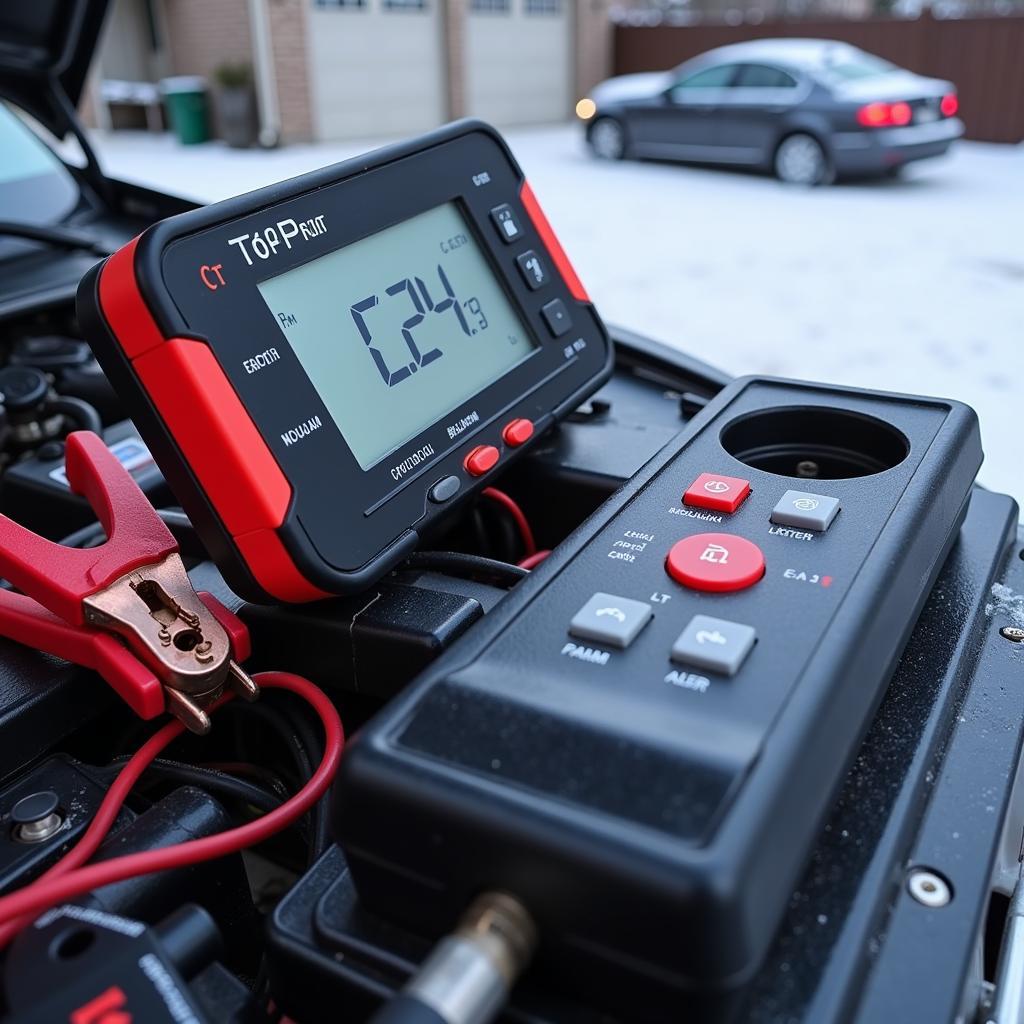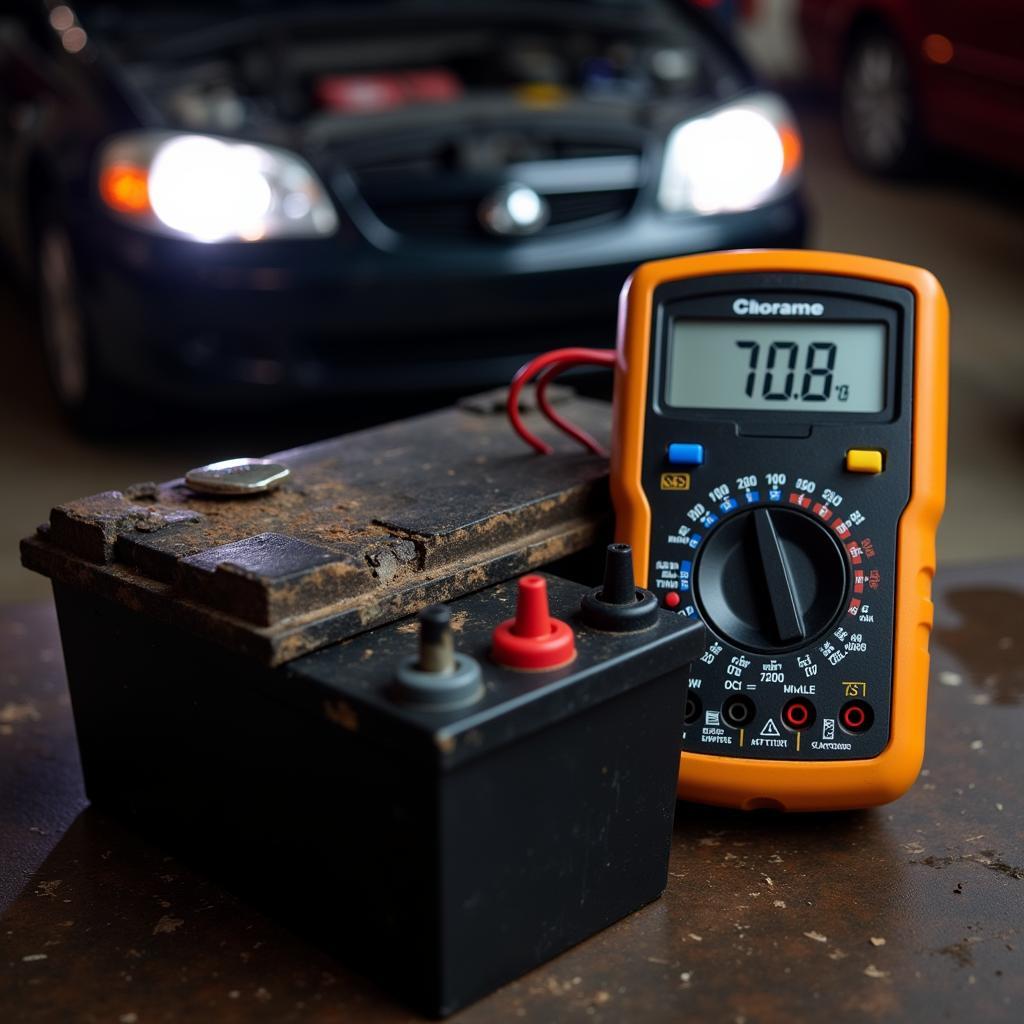A cold kill car battery is a common winter woe for drivers. Freezing temperatures can significantly reduce a battery’s cranking power, leaving you stranded on a frosty morning. Understanding why cold weather impacts your battery and knowing how to prevent and address this issue is essential for smooth winter driving. Let’s delve into the science behind this chilly challenge and equip you with the knowledge to keep your vehicle running strong all winter long. After reading this, you’ll be able to diagnose, troubleshoot and even perform some remote software fixes to keep your vehicle running smoothly.
Understanding the impact of cold weather on your car battery is the first step towards preventing a cold kill. When the temperature drops, the chemical reactions within the battery slow down, reducing its ability to deliver the necessary power to start your engine. This is exacerbated by the increased demand for power from systems like heaters, defrosters, and heated seats, putting extra strain on an already weakened battery. Additionally, engine oil thickens in the cold, making it harder for the engine to turn over, further stressing the battery. For more information on this and other battery issues, see our guide on car battery problems in cold weather.
Why Does Cold Weather Kill Car Batteries?
The chemical reactions inside a lead-acid car battery rely on the movement of ions in a liquid electrolyte. Cold temperatures cause this electrolyte to become more viscous, hindering ion movement and reducing the battery’s ability to produce current. Think of it like honey; it flows easily when warm but becomes thick and sluggish when cold. The same principle applies to the battery’s electrolyte.
The Science Behind Cold Cranking Amps (CCA)
The CCA rating on your battery indicates its ability to start an engine at 0°F (-17.8°C). A higher CCA rating means the battery can deliver more current at low temperatures. Check your car’s manual for the recommended CCA rating and consider upgrading to a battery with a higher CCA if you live in an area with harsh winters.
 Cold Cranking Amps Test
Cold Cranking Amps Test
Preventing a Cold Kill Car Battery
Taking proactive steps can significantly reduce the risk of a cold kill. Regular battery maintenance is key. Keep the battery terminals clean and free of corrosion. A simple mixture of baking soda and water can effectively remove corrosion. Ensure the battery cables are securely connected. A loose connection can reduce the current flow and contribute to starting problems. Check if your car keeps killing batteries. If so, it might be a parasitic drain issue, and immediate attention is required.
Battery Testing and Replacement
Regularly testing your battery’s voltage and CCA is crucial, especially as it ages. A voltmeter can check the voltage, and a battery load tester can assess its CCA. If your battery is nearing the end of its lifespan, consider replacing it before winter arrives. This is a proactive measure that can save you from a cold weather breakdown.
What to Do if Your Car Battery Dies in the Cold
If you find yourself with a dead battery on a cold morning, there are a few options. Jump-starting the car using jumper cables and another vehicle is a common solution. Ensure you follow the correct procedure to avoid any damage to either vehicle. Another option is to use a portable battery jump starter. These compact devices can provide enough power to start your engine without the need for another vehicle. You can also learn how to get battery out of key fob if you need to access the physical key.
Remote Diagnostics and Software Fixes
In some cases, a dead battery might not be due to the cold itself but an underlying electrical issue. Modern vehicles have sophisticated electronic systems, and a software glitch can sometimes lead to battery drain. Remote diagnostics and software updates can sometimes address these issues without a physical visit to a mechanic. For some specific models like Audi or Subaru, knowing how to change the Audi key fob battery or replace the Subaru key fob battery can also be helpful if the problem is related to the key fob.
Conclusion
A cold kill car battery is a frustrating but preventable problem. Understanding how cold weather impacts your battery, performing regular maintenance, and knowing how to address a dead battery can keep your car running smoothly throughout the winter. Don’t let the cold stop you – be prepared and enjoy the winter season without battery woes!
FAQ
- How often should I test my car battery? Ideally, every three months, especially before winter.
- How long does a car battery last? Typically, three to five years, but this can vary based on usage and climate.
- Can I leave my car battery charger on overnight? While some chargers are designed for this, it’s best to consult your charger’s manual for specific instructions.
- How can I tell if my car battery terminals are corroded? Look for a white, powdery substance around the terminals.
- What is a parasitic draw? A constant drain on the battery even when the car is off, often caused by faulty wiring or electronics.
- Can extreme heat also affect my car battery? Yes, extreme heat can also damage a car battery by causing the electrolyte to evaporate.
- What are some signs of a failing car battery besides slow cranking? Dim headlights, flickering interior lights, and clicking sounds when turning the key are some common signs.

